Supporting social emotional growth in your after school program is an important part to providing quality care. Many people in our field would say it is the biggest part.
Kids sit in school all day and learn math, reading and science, then the school bell rings and they come to After School. No one expects after school programs to sit the kids down and teach English or Geometry. The expectation is that the kids will get their homework done and have some fun before their parents show up to cart them off to soccer, or dance, or whatever the next escapade is in their weekly routine. Of course, we know we do way more than help with homework and let children play, but this is the most basic expectation of an after-school program.
What outsiders often overlook is the level of social emotional guidance necessary for a child in our programs to grow and be successful. Below I have compiled the most complete guide to supporting school-age children in their social emotional growth in after school programs.
1. Model Appropriate Behaviors for social emotional growth
Children learn by watching and doing. If children see teachers and other adults modeling appropriate behaviors, they are more likely to practice these behaviors. Child are always watching, even when they seem to be engaged in another activity. Ensure that kids are getting to right lessons from you. Hopefully, the following concepts come easy to you.
Share
We already do this, especially as teachers, we work with limited resources and rely on one another for supplies. The next time another teacher shares something with you make the exchange in front of the children. This demonstrates that sharing is something that adults and children can do successfully.
Model gratitude in front of the children

Again, chances are you acknowledging people for kind gestures all the time. When given the opportunity, provide those kind words in earshot of the kids.
Help those in need
Yes, we help children all day long because it’s our jobs; they know it and expect it. To model helping others, you need to demonstrate helping someone you are not “expected” to help. Teach kindness by helping another adult, even in the simplest of ways. Pick up something they dropped, hold a door, or help clean up a mess. Kids see these simple acts and will learn from observation.
Model sharing feelings
We are constantly asking children to talk about their feelings. Lead by example. What I have found successful is simply naming my emotions when addressing the children. “When you all helped each other clean up, it made me very happy.” or “I am disappointed that I have asked you twice to clean up and we are still not ready.” These simple statements express emotions that children understand and shows the appropriate way to express feelings.
.. and of course, use please and thank yous. This needs no further explanation. Thank you.
2. Support Self esteem
Positive self-esteem is an important part to healthy social emotional development. Children who have a positive self image will have the confidence to manage challenges in their lives successfully. Children who have high self-esteem are more likely to ask for help when the need it, and to value themselves and others.
Letting kids fail leads to social emotional growth
This may seem counter-productive when talking about building up a child’s self-esteem, but it’s necessary. Kids need to learn how to deal with failure. I have purposely set up activities I expect kids to fail at..the first time. The reason I do this is that I have never seen a child so confident as when they employ the trial-and-error method and finally finds success. It does not matter what the activity is. What does matter, is that a child tried and failed, and then tried again and failed, and tried again, and succeed. The way that child feels when they are successful is truly organic self-esteem.
Compliment children on their behaviors
Ensure that kids know you appreciate their efforts. When a youth is making an effort to make the right choice, or to grow as an individual, acknowledge their efforts. This tells them that you have taken an interest in their growth and it will build on their self-esteem.

Let them figure it out
It is our instinct to step in whenever a child needs help, but that is not the best way for children to grow. Instead, give them time to figure out their own solution to the problem. Certainly, if they come to you for help you will do so, but if they don’t, let them figure it out on their own. This can apply to simple things like split milk, but it can also apply to larger things like a dispute between friends. The best thing to do when these situations arise is stay close but don’t interfere until asked or needed. When children have the opportunity to make choices or figure it out on their own, and they are successful, it builds their self-esteem and self worth.
3. Talk about emotions
Emotions motivate behaviors. It is important for children to understand their emotions so they can control their behaviors. When kids talk about their feelings in congruence with actions, they are better able to self regulation and develop socially and emotionally.
Let children know their thoughts and feelings matter
We can convey this message through group discussions, projects and activities. We often ask children for opinions or ideas. When we do this, we tell that child they have good ideas and that there thoughts matter.
Use emotion words when talking with children
You might say, “I saw you caught that foul ball, you should proud” or “I see you struck out, it’s ok to be frustrated.” Naming emotions gives kids the chance to hear and use feeling words in their everyday lives. Being able to name emotions will give children the ability to communicate more effectively and talk about their feelings.
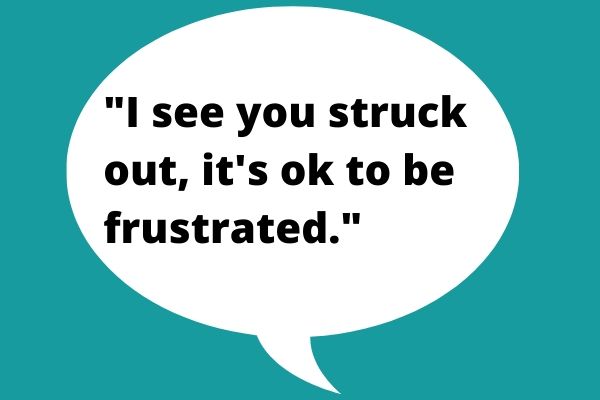
Acknowledge difficult feelings
Let children know it’s ok to have strong feelings, and share some coping techniques to deal with the situation. Let’s say a child is playing a game and loses, the child is furious. You can say “I can see that you are having big feelings right now, would you like to cool off and read a book?” or “I see you are experiencing some emotions, why don’t you go get a drink and cool off.”
Encourage children to practice empathy
When appropriate, draw attention to another person’s point of view. This does not have to be during a disagreement with another child. It can be anytime you see an opportunity to broaden horizons.
You may say, “Beckett, if you kicked that ant hill how would it make the ants feel?” or “I see you took the car Bre was playing with, how would you feel if you were her?”
Getting children to think about how others feel is an important part of social emotional growth and guiding children in empathy will aid in the growth of self awareness.
Support social emotional growth through game play
You can get children talking and exploring emotions, feelings and social expectations through games that support social emotional growth. Games like emotional charades allows kids to explore what emotions look like in a fun game. Click here to see games that to support emotional development.
4. Follow Their Lead
Pay attention to each child’s needs and interests. Following their lead helps us connect with children, build self-esteem and foster social emotional growth in after school programs.
Get to know the social and emotional needs of the children in your care
We are constantly observing children play and communicate with others. When you have been working with the same group of children for some time you get to know their needs and tendencies. You know the competitive child who needs closer observation during group games, the possessive kid who may struggle with sharing, or the bossy one who will need reminders about taking turns. Once you know the needs of children in your care, plan activities that promote social and emotional growth specific to the needs of your children and program.
Learn what the children are curious about and what they enjoy
Plan daily activities around kids’ interests to engage youth and promote growth. If a child expresses interest in dinosaurs, plan an activity about archaeology. If a child gets excited about the latest Harry Potter book they read, plan a game of Quidditch. When children can share their expertise with others, it promotes confidence and builds on social skills. This can be especially powerful if you apply it to every child. Get to know them and plan an activity you think they would enjoy.
5. Provide adaptations for social play
Often, children with social emotional difficulties have trouble with play skills. Here is where we can make accommodations. Provide multiple opportunities for children to practice social skills and provide support and guidance to children who need it.
Partner activities for Social Emotional Growth in After School Programs
When choosing partners for activities pair children who work well together, and can learn from one another. A child who is patient can work well with a child who is impulsive, and if a teacher provides guidance, these same children can learn from one another.
Add Social Games to allow children to Grow Through Play
Praise appropriate interactions and skills when children take part in social games, partner activities, or any interaction that requires communication skills.
Plan skits
Children can learn through situational role playing. Pair together children with various social and emotional abilities and ask them to develop or write a skit about an emotion. This broad topic allows kids to be creative, but also to think about what emotions mean. For example, what does it look like to be angry, what can cause anger, and how to deal with anger.
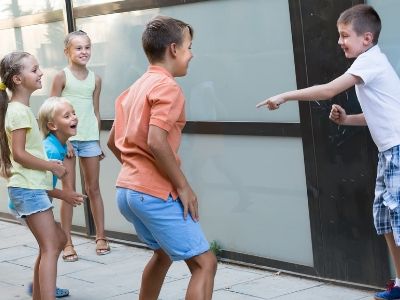
Help children grow outside of your program
It is beneficial for all children to participate in play dates outside the classroom or program. Take your role a step further and help families arrange play dates so children can practice social development in new situations.
6. Fostering relationships
Children learn appropriate ways of responding to emotions and expressing their own emotions through relationships. Relationships allow children to explore their surroundings and learn how to be members of their social and cultural worlds.
Promote nurturing and responsive relationships through supporting children’s play
We have all seen children play “house”, what children do and say during a regular game of “house” is usually a reflection of what they see and hear in their own homes. While this can be amusing, it can be a learning opportunity as well. Compliment children on the positive interactions you observe while they play.
Listen

Another important aspect of fostering relationships is simply responding to children’s conversations. When a child tries to engage you with a question or a story, give them your attention. When you can fully engage in a conversation with a child, no matter how silly the conversation may be, you are building a relationship with that kids and making them feel respected.
Get parents involved
You can take this concept a step further, don’t just respond to the child’s conversation, bring it to the parents. Building relationships with families can be just as beneficial to a child as building the relation with them. Engaging parents in normal everyday conversation shows the children you and their parents are on the same page. It also conveys to the parent that you have taken an interest in their child.
Providing positive feedback to children is a good way to build strong relationships
Children, and adults, for that matter, respond well to compliments and praise. Kids seek recognition for a job well done. They especially respond well to positive feedback from people of authority. As a teacher and a leader in their lives your opinion matters to them. Praise kids for good choices.
Give Praise
Praising children for good choices leads to encouraging appropriate behavior, which is my next point. Encourage children to make the right choice. In my current program we say “be a doer”. This simply means, do what needs to be done.
If you see a piece of garbage on the ground, throw it away. When you see a friend who needs help, help them. If you see someone struggling to open a door, open it for them. It’s a simple concept that has worked well for my program, but whatever method you use, encouraging desired behaviors fosters relationships and builds on social emotional skills.
Collaboration
When fostering relationships to better the social emotional development of youth in your program we need to look beyond the children. Collaborating with classroom staff members and other professionals in our organization, and the field of childcare is important to understanding the needs of each individual kids. The fact that you are reading this says you care about the needs of the children. Keep up to date on the latest studies and reports on social emotional growth.
7. Get Families involved
Children who have a strong sense of who they are, have a stronger sense of self worth. Children whose parents are active in their education and extra-curricular activities earn better grades in school, exhibit superior behavior, and have better social skills.
Incorporating family values, cultures and beliefs
Talk with parents about traditions and customs in their household. Ask children and families to share those customs and what makes them unique. This can build confidence socially and build on a child’s emotional security.
High-quality family-teacher relationships act as important models for young children
Building relationships with families of the children you care for can be one of the most important steps in providing quality care for that child. When families trust you and confide in you, you are better able to provide for their kid. In my experience, I am sure you can relate, some families are easier to connect with than others. But, we both know it is in the best interest of the child to forge a bond with the family. There are many strategies to engage families in their children’s social emotional growth. These are the strategies I have found most successful:

Ask families to share their philosophies or thoughts on their child’s social emotional growth, background and beliefs
These topics can be touchy for some families. In my experience, if you talk with families about their family background and beliefs and they know the questions are coming from a good place parents are happy to share.
Suggest books parents can read to children
Reading that discuss feeling and social interactions are a great way to broaden children’s realm of social behaviors. There are hundreds of books that preach social awareness in one shape or another. Actually, I am hard pressed to think of a single children’s book that does not have a message of kindness, friendship, social consensus or another concept that promotes social emotional development. Read on!
Invite families to come to your program and observe experiences and activities that promote children’s social emotional learning
Let families know they are welcome to sit and observe at any point. Encouraging them to sit in and watch daily activities helps parents feel that that their child is learning and growing in your program. You can also host a family night. Check out our list of 18 family night ideas to get started.
Be responsive to families’ needs or concerns about their children
When a parent expresses concerns about a child, address it immediately. Weather it is something small or something large, establishing a reputation for getting things done is important. If you are working to build relationships with families, the best thing you can do is truly take an interest in their child. Parents know when you are just telling them what they want to hear, and when you are taking an interest. Take an interest.
8. Train, Train, Train
When teachers have proper training on social emotional development, children in their care have increased social skills and reduced problem behaviors. Trainings within this field are broad. There are many topics under the umbrella of social emotional growth. Three training topics I have found beneficial to teachers and staff include training on communication skills, family engagement and child behavior and development.

Communication skills
This is an obvious choice, knowing how to communicate with children, families and other professionals is an important part of our jobs. But a refresher on how to communicate effectively is good for everyone occasionally.
Family engagement
Knowing how to communicate properly and build relationships with families is just as important as know how to relate to children. Training on family engagement benefit the teacher, the families, and the child.
Child behavior and development
Learning the most recent information on child behavior and development research is good for everyone. That being said, child behavior research is improving, there is always new information. With the constantly changing atmosphere of childcare this is a good training topic for any teacher or child care professional. Governing agencies require us to seek continuing education, this is a good opportunity to find a quality training on the latest concepts and information.
9. Create a Social Emotional Rich Environment
Create predictable schedules and routines. Children thrive on routine. It is important to consider the balance of activities when creating a routine then encourages social emotional development.
Balance active times with quiet times and group times with alone times. Many children rely on routine to keep a consistent in their lives, it is important that children know what is coming next. Keep routines consistent and foreshadow what is coming next. This helps children know what to expect and gives them the ability to thrive socially.
Provide a variety of toys that promote social interaction
Many toys encourage cooperative play, some favorites include Legos, dollhouses, and dinosaur figurines. All of these toys promote interactions. Any dramatic play item will promote community collaboration among kids. Just let kids be kids, and they will join in cooperative play. Click here to see our list of recommended social emotional games.
Hire responsive and nurturing adults
This should be step one. Make sure the people you hire are responsive to social needs and cues. Some people are naturals at caring for others and some people need to training on the topic. Either way, make sure the people who are caring for the children you care about are right for the job. In order to create a social emotional rich environment you need to be able to rely on your staff.

Effectiveness in the classroom
Creating a social emotional rich environment means that teachers use clear warnings and transition signals to help children efficiently transition between activities. Teachers also incorporate children’s interests and preferences into classroom experiences and routines. They encourage children to express their thoughts and share their feelings about events or situations. Teachers validate children’s feelings and thoughts.
10. Social Emotional Growth Planning
Use daily activities to help children build social skills. Activities like snack time and free choice activities help children by practicing cooperative play, engaging socially and taking turns.
Encourage pretend play for social emotional growth
Let children create their own play by developing a pretend story. Teachers can play along, and, if appropriate, encourage peers to join in. For example, if the kids have created a pretend restaurant, it is good for their development if a teacher “visits” their restaurant. This engages children socially and encourage children to develop situational awareness.
Help build positive peer relationships
Teach strategies youth can use to play or work with others, then provide opportunities for kids to build social skills. This most likely will take form in the utilization of partner play or small group activities. Have children step out of their comfort zone and work with someone new. I’m sure we all remember being the kid in this situation. Your teacher pairs you up with someone you don’t know well and they force you to work with them. And in most cases it ends fine, and you end up making a new friend or at the very least an acquaintance. Take kids out of their comfort zone to build peer relationships.
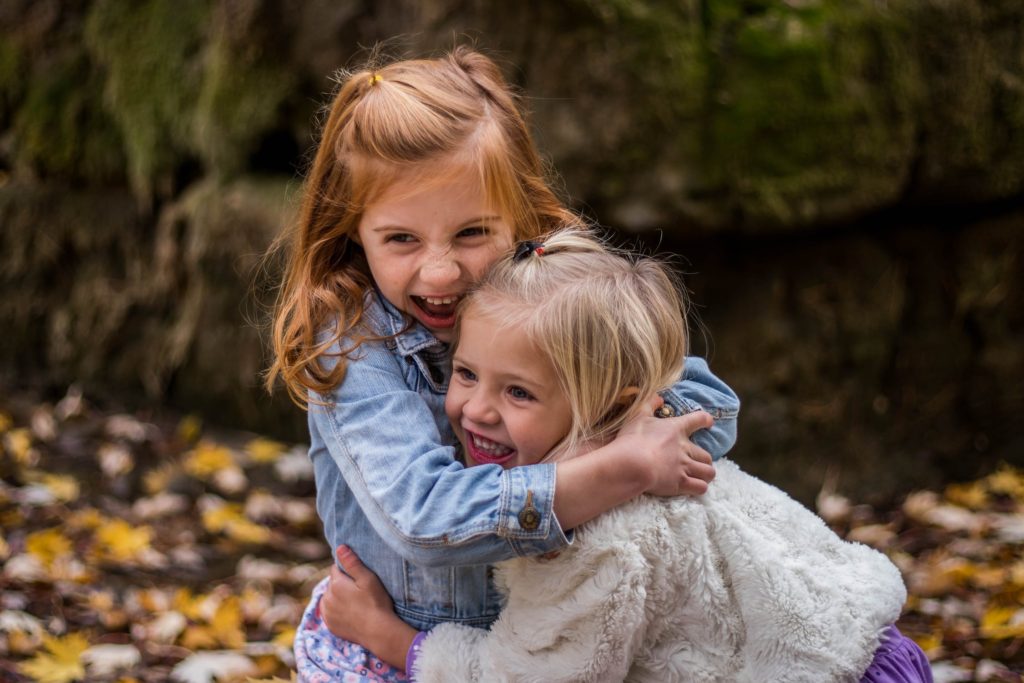
Use children’s books to teach social skills
I mentioned this before. Children’s books are a great source for examples of proper social and emotional interactions. Choose books about making friends, taking turns, and cooperation. Read the book out loud to the group. I have found that it does not matter the age of the children, everyone enjoys being read to. While you are reading pause between chapters or sections to discuss any challenging social situations, the protagonists encounters along the way.
Conclusion
Creating a program that supports the social emotional growth of children in your after school program is an important part of providing quality out-of-school care. Fortunately, you are likely already using some of these concepts in creating a developmentally appropriate space for children. Your next step is to look deeper at your practices and the children in your program. Use this guide to determine if you can make any small changes that will provide additional social emotional support to the children in your care. Develop a plan practical for your program and implement the plan.
The fact that you read this article tells me you are serious about providing the best environment for children. Thank you for taking an interest of the children in your care. We need more teachers and professionals in school-age child care that work to support the whole child. Good luck with creating a place for children that promotes social and emotional development.
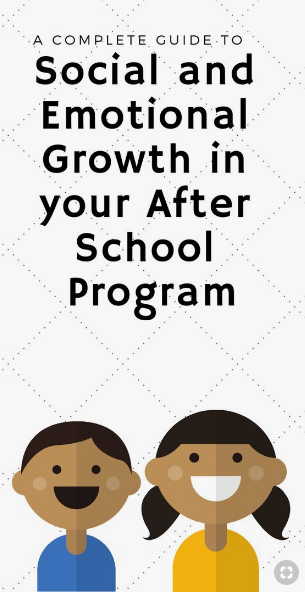


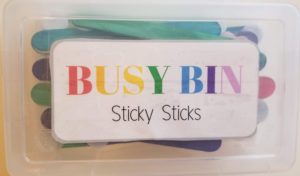
Pingback: See the Water Cycle in Action - That After School Life